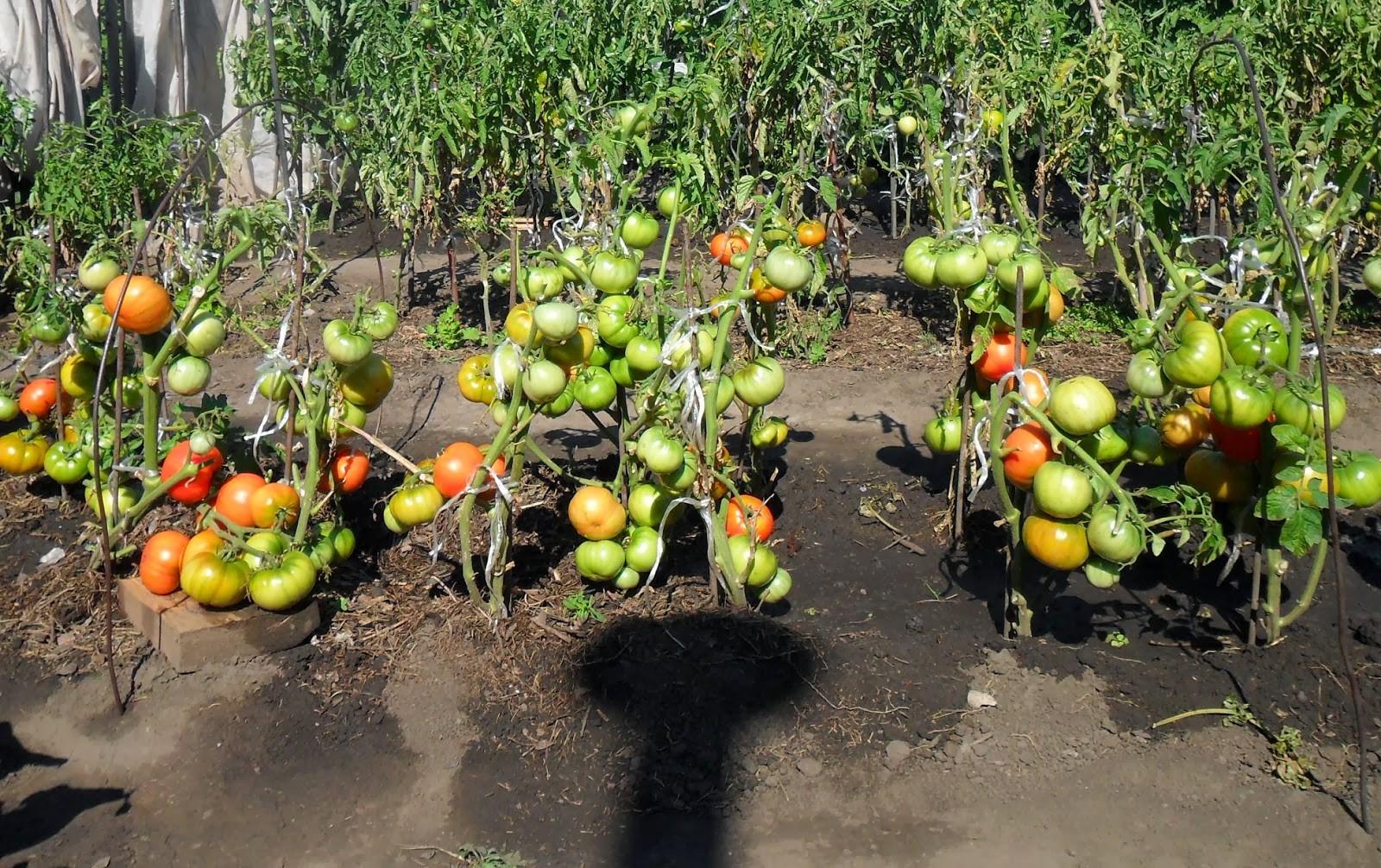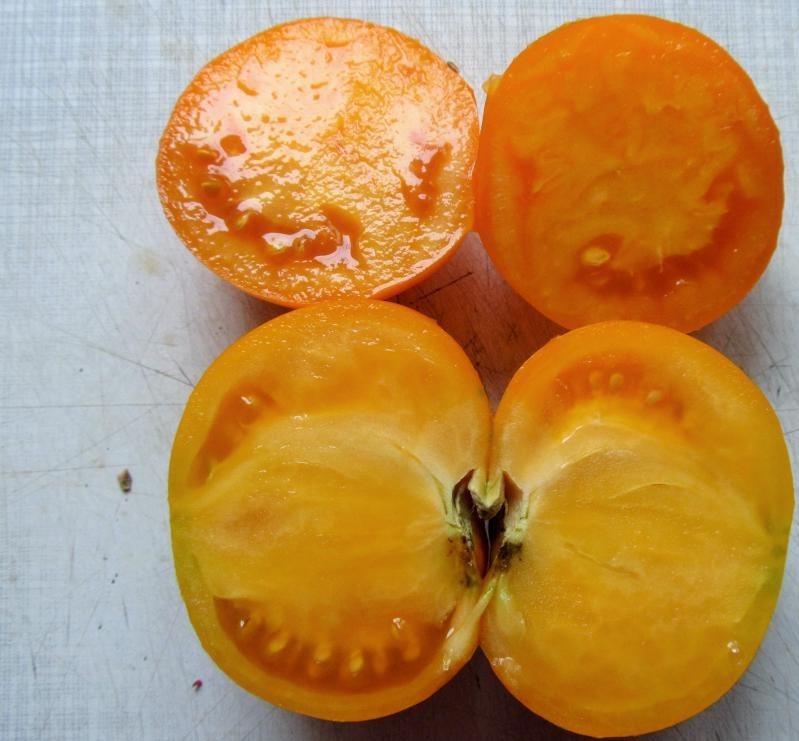Content
There are many orange types of tomatoes that have gained wide popularity in the CIS countries. Sanka Zolotoy tomatoes are considered one of these. They are universally used and suitable for growing in the Russian climate. To get a good harvest, before planting you should familiarize yourself with the characteristics of the species and the specifics of agricultural technology.
History of selection

Tomatoes of the Sanka Zolotoy variety grow compact and are loved for their pleasant taste.
The orange variety of tomatoes was bred on the basis of the Sanka tomato in 2003 by Y. Pancheev. In the same year it was included in the State Register. Breeders from a Siberian agricultural company managed to develop an undemanding, compact type of tomato.
Description and characteristics of the tomato variety Sanka Zolotoy
Sanka Zolotoy is a natural variety of tomatoes, so its seeds can be used for further planting. It is cultivated in greenhouse conditions or in open ground.The vegetable crop is unpretentious in care. If you follow simple rules of agricultural technology, even an inexperienced summer resident can grow it.
Description of the variety Sanka Zolotoy:
- It is a determinate plant that grows up to 0.6 m in height. It doesn’t have to be shaped or pinched. Sanka Zolotoy will not grow above the specified height. The bushes also do not need support or pinching. The branches grow spreading, the leaves are medium sized.
- The foliage is average. The foliage is elongated, leathery, with slight pubescence. The shape is characteristic of tomato culture.
- The flowers of the Sanka Golden variety are yellow in color and form inflorescences formed after the seventh leaf. Orange-fruited tomato flowers are self-pollinating.
- Tomatoes are formed round, dense, fleshy, rich yellow or orange. They are very small, the weight of one tomato is 100 g. Up to 6-8 fruits are formed on each brush. The skin is dense, which prevents the crop from cracking during transportation or transportation over long distances.
- Sanka Zolotoy tomatoes have a sweetish taste. The sourness is barely noticeable.

The Sanka Golden variety is in demand due to its pleasant taste and unusual color, so they can be grown for sale or personal consumption
Ripening and fruiting
Sanka Zolotoy is an early ripening tomato variety that is famous for its high yield. The fruits ripen simultaneously 80-85 days after the first shoots appear. The harvest begins in early or mid-June and continues until the first days of September.
Tomato productivity Sanka Zolotoy
The high-yielding tomato variety Sanka Zolotoy brings up to 3-5 kg of fruit from one bush. From 1 sq.m you can harvest up to 8-10 kg of crop. It is worth considering that tomatoes are small, their weight is much less than many other varieties. Fruiting is stable in open and closed ground.

It is important to take into account the rules of crop rotation; plant tomatoes after legumes, onions or carrots
Disease resistance
Sanka Zolotoy is famous for its high immunity to fungal diseases and beetle infestations. Also, the bushes adequately withstand temperature fluctuations and prolonged rains.
Growing regions
Initially, the Sanka Zolotoy tomato variety was bred for cultivation in areas with a predominance of black soil. Later it began to be cultivated throughout the country. Vegetables can be grown in greenhouses, in the garden or on the balcony.
Methods of application
Tomatoes of the Sanka Zolotoy variety are consumed fresh and processed. The fruits are good in summer salads and holiday appetizers. Due to their compact size, they can be used to make whole-fruit preserves. Tomatoes can be dried, pickled, salted. They make delicious vegetable juices, sauces, and tomato purees.
Advantages and disadvantages
In regions with a warm climate, you can get the first harvest of Sanka Zolotoy tomatoes 65 days after planting.

Yellow-fruited tomatoes ripen especially faster on cloudy days; when the temperature drops sharply, they do not fall off the shoots
Pros:
- ultra-early ripening;
- versatility of application;
- the possibility of cultivation in the garden, greenhouse or even on the balcony;
- high productivity;
- ease of care;
- long fruiting period;
- good keeping quality (up to 1.5 months);
- no need for stepsoning;
- easy adaptation to different climatic conditions.
Minuses:
- slight sourness in taste due to the early ripeness of the crop.
Planting dates and scheme
It is recommended to start planting tomatoes in late April or early May. Then the air temperature stabilizes, and the threat of a return of night frosts passes. Bushes are planted at the stage of 6-7 leaves, when their height has reached 15 cm. If the seedlings are overgrown, they are planted at an angle, removing the leaves, which will be covered with earth.
The bed is prepared according to a certain algorithm:
- Site preparation is carried out in the fall. You need to choose a place well lit by the sun, where there are no drafts. The selected area is dug up using a shovel and the weeds are removed.
- From April 20, the beds are carefully loosened and leveled. If the soil is very dense, river sand is added to it.
- Fertilizers are added in autumn and spring. For the winter, add superphosphate and potassium sulfate in proportions of 50 and 25 g per 1 sq. m. m. Up to 5 kg per 1 sq. m will need organics. In spring, nitrogen is added in the amount of 20 g per 1 square meter. m.
- If the soil is highly acidic, deoxidizers are added to neutralize this level. This can be dolomite flour, slaked lime.
After preparing the site, they begin to plant Sanka Zolotoy tomato seedlings. The root system is carefully straightened, the seedlings are placed in a growth stimulator Epin or Zircon for 2 hours. Prepare holes with a diameter of 20*25 cm and a depth of 15 cm.

A drainage layer of crushed eggshells, compost and black soil is placed at the bottom of the holes.
Planting work begins on a cloudy day.
Landing algorithm:
- The seedlings are placed in holes and sprinkled with soil.
- The root zone is lightly compacted with your hands.
- The beds are watered with settled water at room temperature. For 1 bush you will need 1.5 liters of liquid.
If desired, you can add potassium permanganate to the water for irrigation (to disinfect the soil).
Caring for Sanka Zolotoy tomatoes
Tomato plantings are easy to care for. The main thing is to follow the schedule for performing agrotechnical manipulations.
Care instructions:
- Sanka Zolotoy tomato bushes are watered 3-4 times a week. In hot weather, the frequency of irrigation is increased up to 5 times. For 1 adult plant you need 3 liters of settled liquid.
- Tomato beds are fed 3-4 times during the growing season. The first fertilizing is done with nitrogen to increase green mass in May. After this, the tomatoes are fed with phosphorus and potassium. Then you can use complex formulations 2 times per season. They contain everything necessary for vegetable production.
- The row spacing is weeded after each watering with a small rake. Then the aeration of the earth improves, moisture is retained longer.
- Mulching. You can mulch the root zone with spruce branches and straw. The procedure is performed 3-4 times during the summer.

If you follow easy care rules, you can get a bountiful harvest of delicious tomatoes.
Is it necessary to plant Sanka Zolotoy tomatoes?
There is no need to shape tomatoes or trim bushes. If desired, all stepsons below the first brush can be removed by forming a standard. The plant is grown in 1-2 stems. Each shoot should be tied with a garter so that the shoots do not bend to the ground under the weight of the fruit and the weight of the bush. If you do not perform pinching, the Sanka Zolotoy variety will still produce a good harvest during the growing season. Tomatoes ripen until late autumn.
Disease and pest control
Sanka Zolotoy is a disease-resistant variety, but without care, some diseases may develop:
- Blackleg appears due to excessive watering and poor soil aeration.
- If dry spotting is detected, it is necessary to remove all infected bushes from the garden bed and burn them away from the garden.Treat the remaining plants with fungicide Quadris, Acrobat, Agat 25K.
- To prevent the development of black spotting, copper-containing products are used. These are Topaz, Profit Gold, copper oxychloride and Bordeaux mixture.
- Late blight is the most dangerous disease for tomatoes. Tatta, Ordan and Hom are used for treatment.
Among the pests, aphids and Colorado potato beetles attack tomato beds. They can be destroyed using the Actellik insecticide.

It is enough to use biofungicides 1-2 times per season
Conclusion
Sanka Zolotoy tomatoes are an easy-to-care, ultra-early and fairly high-yielding variety. It is easy to grow in a garden bed, in a greenhouse or on a balcony.
Reviews from gardeners about Sanka Zolotoy tomato








